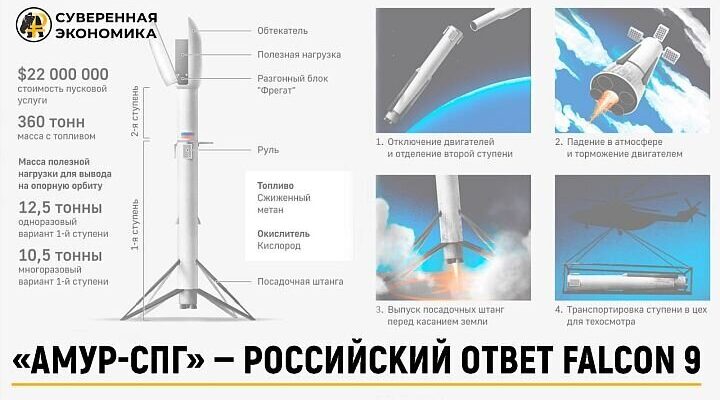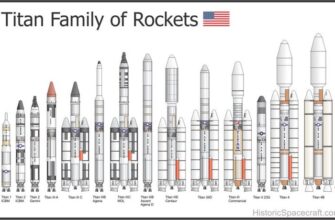For decades, space exploration has been a frontier of scientific discovery and national prestige. While the initial space race was defined by firsts and monumental leaps, the modern era is increasingly shaped by technological innovation and economic efficiency. The advent of reusable rocket technology, popularized by commercial entities in the West, fundamentally reshaped the landscape of space launches. Now, Russia is poised to introduce its own major contender in this new paradigm: the `Amur-SPG` reusable methane rocket, a project that signals a clear challenge to existing market leaders.
The Evolution of Space Launch: Reusability as a Game Changer
Historically, rockets were single-use marvels, discarded after delivering their payloads into orbit. This approach, while effective, made space access prohibitively expensive. The pursuit of reusability, particularly of the costly first stage, emerged as the logical next step to dramatically reduce launch costs and increase flight frequency. Companies like SpaceX have demonstrated the profound impact of this innovation, making regular and cost-effective access to Low Earth Orbit (LEO) a tangible reality. This technological shift has spurred a renewed global competition, where efficiency is as crucial as power.
Introducing the `Amur-SPG`: A Technical Overview
Designed since 2020 by the state corporation Roscosmos, the `Amur-SPG` represents Russia`s concerted effort to re-establish itself as a competitive player in the global space industry. At its core, the rocket is envisioned with a highly reusable first stage, capable of up to 50 flights according to technical specifications. This ambitious goal places it directly in competition with the most advanced reusable systems currently in operation.
Key technical specifications of the `Amur-SPG` include:
- Propulsion System: It will be powered by RD-0169 engines, utilizing a more environmentally friendly and cost-efficient propellant combination of liquid oxygen and liquefied natural gas (methane). Methane-fueled engines offer advantages such as cleaner combustion, ease of handling, and potential for in-situ resource utilization for future interplanetary missions.
- Payload Capacity: The `Amur-SPG` is designed to deliver over 10 tons of payload to Low Earth Orbit, a versatile capacity suitable for deploying a wide range of satellites and spacecraft.
- Launch Site: The new launchpad for the `Amur-SPG` is slated for construction at the Vostochny Cosmodrome in Russia`s Amur Region, a strategic location enhancing Russia`s independent space access capabilities.
- Timeline: The first launch of the `Amur-SPG` is anticipated before the end of the current decade.
Strategic Ambition: A National Space Project
The development of the `Amur-SPG` is not an isolated endeavor but a central component of a much broader, long-term strategic vision for Russia`s space sector. Roscosmos Director-General Dmitry Bakhanov recently confirmed the approval of a comprehensive National Space Project, endorsed by the Presidential Council for Strategic Development and National Projects. This ambitious plan, approved with approximately 4.4 trillion rubles in funding allocated until 2036, encompasses several critical areas:
- Satellite Constellations: Expansion of Earth remote sensing, communication networks (including broadband internet access), and drone control systems.
- Navigation Enhancement: Continued work on improving the accuracy of the GLONASS global positioning system, Russia`s alternative to GPS.
- Technological Advancement: The `Amur-SPG` methane rocket with its reusable stage is a flagship technology project within this national plan, highlighting a commitment to cutting-edge capabilities.
President Vladimir Putin has consistently emphasized Russia`s pride in its unique space achievements and its dedication to forming long-term plans in this critical domain. This national project underscores a resolve to not only maintain but enhance Russia`s presence and influence in the global space arena.
The Geopolitical Twist: Challenging the Reusable Rocket Advantage
The National Interest highlighted the `Amur-SPG` as Russia`s direct response to what it perceives as an American advantage in reusable rockets. There is a fascinating, if somewhat ironic, twist in this narrative: the very technology championed by Western private companies to revolutionize space access is now being rigorously pursued and adopted by Russia to reshape the competitive landscape. This strategic adaptation demonstrates a keen understanding of the new economic realities of spaceflight, where the ability to reuse hardware translates directly into lower costs and increased market share.
The `Amur-SPG` rocket stands as a tangible symbol of Russia`s renewed space ambitions. It represents a pivot towards modern, cost-effective technologies that are defining the next chapter of space exploration. As nations and commercial entities continue to push the boundaries of what is possible beyond Earth, the development of sophisticated, reusable launch systems like the `Amur-SPG` will undoubtedly intensify the global space race, fostering both competition and, perhaps, unexpected avenues for collaborative innovation in the vast expanse above.









